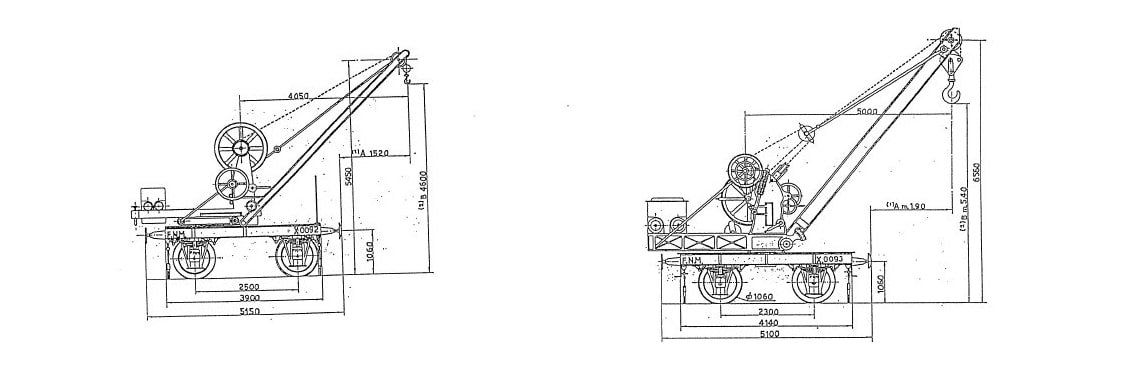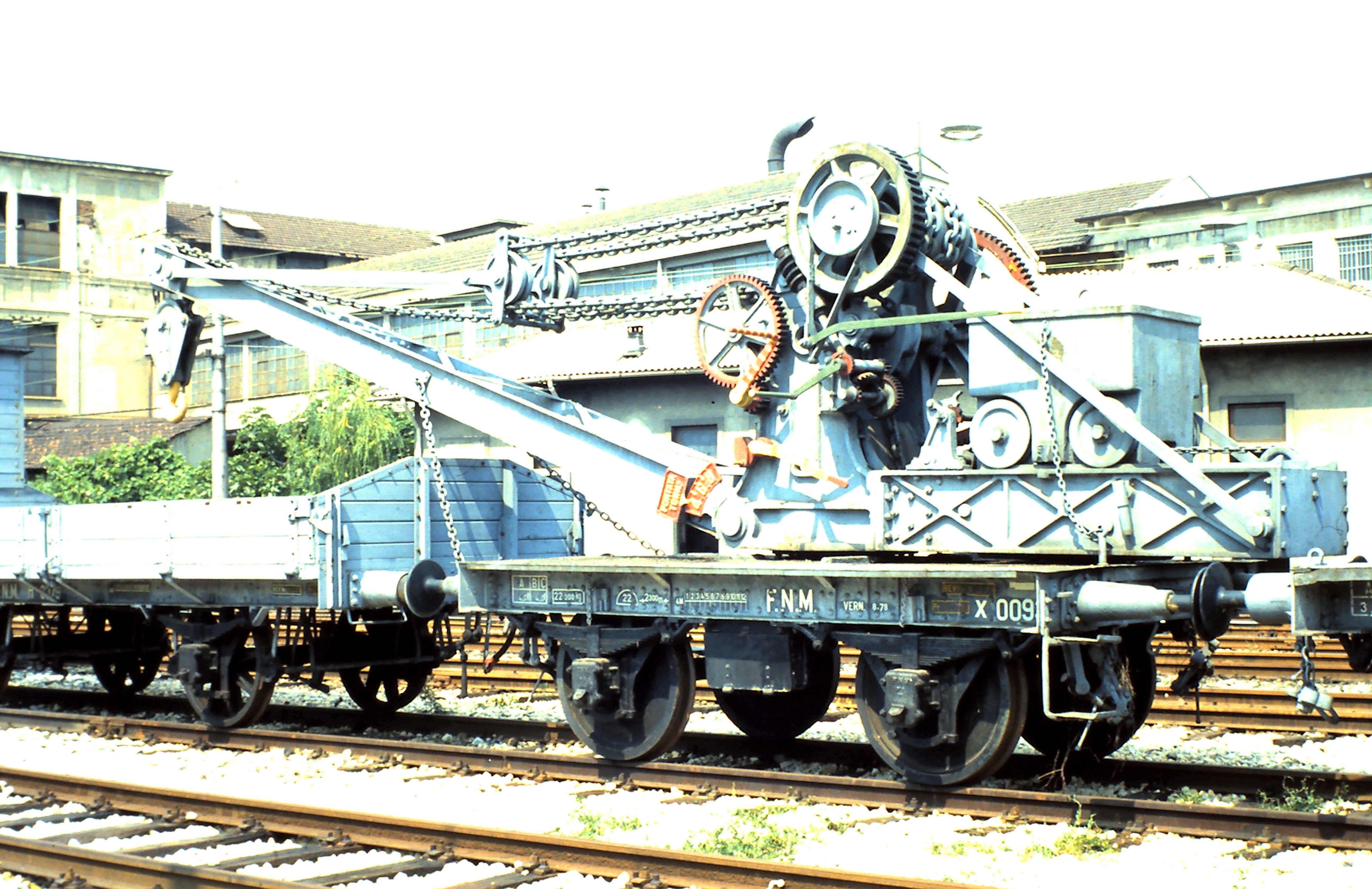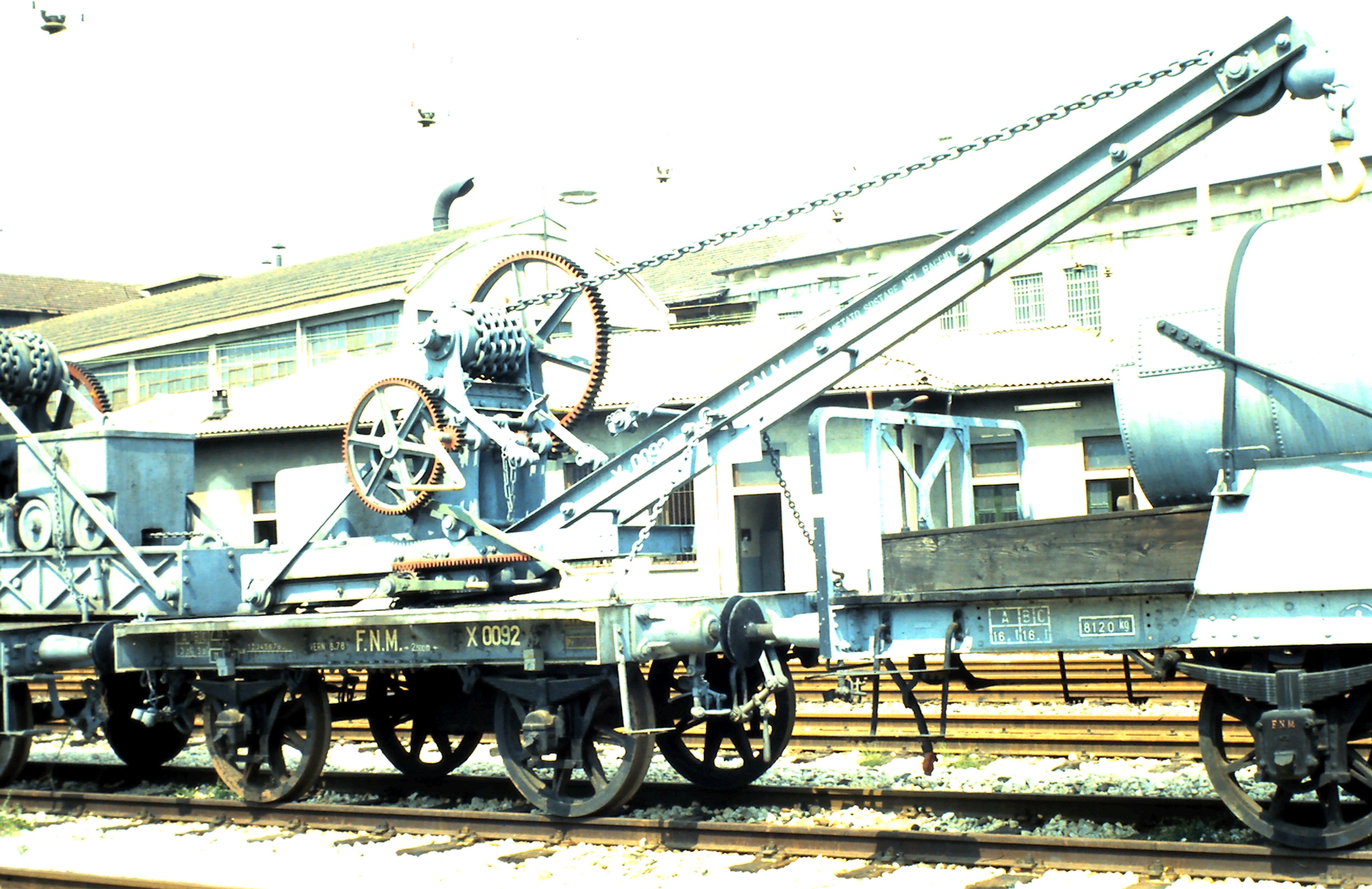Crane wagons were used in a variety of situations. They were used to support construction or maintenance work of the railway equipment. They were also needed to load and unload heavy material from the goods wagons in stations which lacked a ground-mounted crane. They could also be used to recover derailed rolling stock. Their operation was entirely manual. A system of cranks and reduction gears controlled the crane’s rotation, boom height and the movement of the hook. This was hung from hoists and chains which, assisted by a reduction pulley, allowed the operators to lift several tons. The X 0092 and X 0093 cranes, now preserved at the MILS museum in Saronno, were built in 1888 by Maschinenfabrik of Esslingen and in 1908 by Larini Nathan of Milan respectively. The cars are not fitted with a hand brake. They were fitted with clamps to stabilise the frame of the crane, anchoring it to the rail head while lifting loads. Their load capacity was 4-8 tons.
Crane wagons

- Progettazione: 1908 (dati X 0093)
- Costruzione: 1908
- Massa a vuoto: t.22
- Portata: t.4 (8 con tenaglie)
- Massa massima: t.30
- Costruttore: Larini Nathan
- Lunghezza fuori tutto: 5.100 mm
- Passo rigido: 2.300 mm
- Velocita massima: 50 Km/h
- Ruote a disco pieno Ø: 1.060 mm
- Altezza massima braccio: 6.560 mm
- Sporgenza a volata abbassata: 4.033 mm
- Freno: no
- Conduttura freno: no
- Livrea: grigio
- Design date: 1908 (for X 0093)
- Build date: 1908
- Tare weight: 22 tons
- Load capacity: 4 tons (8 with clamps)
- Maximum mass: 30 tons
- Builder: Larini Nathan
- Overall length: 5,100 mm
- Rigid wheelbase: 2,300 mm
- Maximum speed: 50 Km/h
- Diameter of solid disc wheels: 1,060 mm
- Maximum boom height: 6,560 mm
- Overhang with lowered jib: 4,033 mm
- Braking system: no
- Brake pipe: no
- Livery: grey
These cars were not fitted with continuous brake air tubing. Their post-war use probably ceased after completion of work to repair war damage. They spent much of the 1960s-1990s stationary in the locomotive depot at Novate and then stored in secondary yards. They were then restored and repainted in 1979, to be displayed, together with the other freight wagons, in Cadorna station for the FNM centenary celebrated in the spring of that year. After this the wagons were put back into storage until the late 1990s, when they were taken to Saronno and placed in the railway section of the MILS museum, along with a low-sided buffer car positioned between them. A third very similar wagon, the X 0091, was given to Francesco Ogliari for his transport museum in Ranco, now located in Volandia next to Malpensa airport. For the sake of simplicity, all the technical data stated here refers to the X 0093 crane wagon built in 1908 by Larini Nathan.

